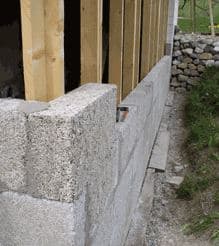When we think of housing in relation to the climate, the focus so far has been on energy efficiency gains for residents. But the building and construction sector itself is implicated in approximately 37% of carbon emissions, according to a UN Environment Programme report backed by the German government.
Materials like cement, steel and aluminium are energy intensive to procure and even more energy intensive to produce. What are the alternatives?
How is Building and Construction becoming more Sustainable?
An indicative case is a recently approved development plan called The Phoenix. Located in Sussex, UK, it’s being managed by Human Nature Developers.
The plan is to redevelop an ironworks that has been abandoned for 20 years. The project is implementing three ecological re-thinks of conventional construction methods.
First, Human Nature are conceiving of the project as “mining the anthropocene.” In other words, they’re taking materials that have already been dug out of the ground and forged rather than purchasing new material, and so avoiding the associated ecological impacts.
The main focus here is on reusing old masonry and sheet metal for cladding and other exposed sections. However, even some of the structural steel components of the old facility are being reused.
The second major re-think embodied in this project is structural timber. The standard approach using reinforced concrete uses about a third of the carbon emissions that go into producing a structure. This is not only eliminated with wood, but if the timber is cultivated rather than wild it means the structural elements effectively take carbon out of the atmosphere.

And the third element on show at The Phoenix is hempcrete. This is a concrete-like material made from the woody core of the fast-growing hemp plant, mixed with a lime binder and left to set for 2-4 weeks. It is used for non-load-bearing elements and requires a fraction of the energy to produce as concrete.
Through steps like these, the UNEP believes building construction can be net-zero emissions by 2060.
Sign Up To Our Free Newsletter